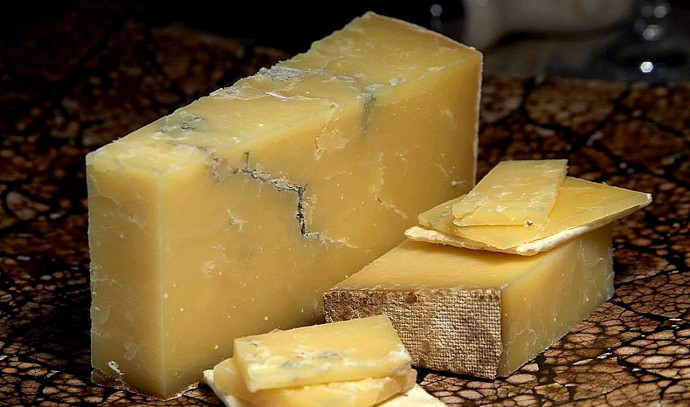Dairy products are more complex than you’d expect. There are those who believe it is bad for your body, those who avoid them for moral reasons, those who believe that it is simply not tasty, and there are also those who cannot go a day without consuming them.
Regardless of how dairy products make you feel, during Shavuot week it seems impossible to avoid meals rich in cheese and dairy products, so we decided to check which cheese is the best for health, and which is less so.
Clarification: In the current rating we will deal only with animal cheeses, not the vegan substitutes. The reason for this is that vegan cheeses are composed in a completely different manner, usually from a base from nuts, almonds, or soybeans, so their nutritional value is always high, even if fattening.
In other words: we support vegan cheeses, they are simply not comparable to classic cheeses in this case. You can read more information about them here.
The highlights: ricotta, cottage and old-fashioned white cheese
Cheeses have quite a few health benefits, but unfortunately, the most popular cheeses have far too much salt, too little calcium and not a little fat. And these are exactly the sections that are examined when looking for healthy cheese. The one that does not fall in these sections, and at the same time is also delicious and indulgent, is the ricotta cheese. Ricotta cheese (5-9 percent fat) can contain up to 620 mg of calcium in a serving of three tablespoons (100 grams), where 1,000 mg of calcium is the recommended daily amount for an adult.
In ricotta cheese, the amount of sodium (salt) is low to medium: 100 to 300 mg of sodium, and the amount of cholesterol ranging from 3-27 mg is also low. Ricotta is also rich in quality whey protein, so it’s always a good choice. In fact, ricotta (in Italian – re-cooking) is a cheese created from the water left over from the process of making another cheese. But don’t let that discourage you, this is a particularly delicious cheese, both for spreading on bread and for combining in recipes for cheesecakes and pies.
Second place goes to “simple” white cheese, assuming you take a moment to choose the right cheese. Various white cheeses contain calcium in an amount ranging from 85 mg to 230 mg calcium per 100 grams. That is why it is very useful to read the food label of seemingly identical products, and choose the cheese with the higher amount of calcium.
In 100 grams of white cheese, the amount of fat and calories is relatively low (about 0.5 percent to 9 fat, about 64-100 calories) and the amount of protein is relatively high (about 9-10 grams of protein per 100 grams). The amount of sodium in white cheeses varies from 200 mg to even 40 mg per 100 grams, an amount considered low in sodium. The amount of cholesterol is also low.
And third place in the list of recommended cheeses goes to cottage. This is one of the most popular cheeses in Israel. Cottage cheese contains a relatively low amount of fat per 100 grams- 1 to 9 percent saturated fat in a low amount, as well as low levels of cholesterol (up to 27 mg cholesterol per 100 grams). The amount of calories is relatively low, about 100 calories per -100 grams. The cheese contains a high amount of protein (about 10.5-11.5 grams of protein per 100 grams). 100 grams of cheese will provide a moderate amount (about 350 mg per 100 grams) of sodium and calcium (about 100 mg “third).
Which cheeses are better to avoid?
Although we have published quite a few studies on the health benefits of fatty cheeses, it is recommended to underestimate their consumption. You don’t have to remove them from the menu completely, certainly not for weeks, but it is important that you know what is in them, and choose the amounts you eat wisely.
Yellow cheeses for example, including cheddar, gouda and other cheeses, have high amounts of protein and calcium (700 to 900 mg calcium per 100 grams and about 18-30 grams of protein) but usually the percentage of fat in them is extremely high (28 up to even 60 percent fat per 100 grams) of which there is a high amount of saturated fat. In addition, the yellow cheeses contain a high amount of cholesterol and sodium.
Parmesan has a lot of calories (about 330) and a high percentage of fat, about 23 percent fat per 100 grams, of which about 14 grams are saturated fat and about 70 mg cholesterol. The amount of sodium is also very high (about 800-1,000 mg per 100 grams), so it is not recommended for people with high blood pressure.
Salted cheeses- Bulgarian, feta, and more: These cheeses range between different percentages of fat and calories, but even if you choose a cheese that is not very fatty, the amount of sodium in it is relatively high. The highest amount of sodium that salted cheeses will contain is about 1860 mg per 100 grams of product, while the lowest amount is about 560 mg. It is important to read the list of ingredients, choose a balanced cheese and eat it in moderation.
Another cheese that is better to underplay is the star of cheesecakes: mascarpone. Its fat percentage is very high, 40 to 50% fat per 100 grams of cheese. Out of the total fat, there are about 27 grams of saturated fat which is not recommended for high consumption due to the fact that it may cause cardiovascular diseases. The amount of calories in this cheese is also high (about 380 calories per 100 grams), but the amount of protein is relatively low (about 3 grams of protein).
Due to the high percentage of fat in this cheese, it also contains large amounts of cholesterol.


